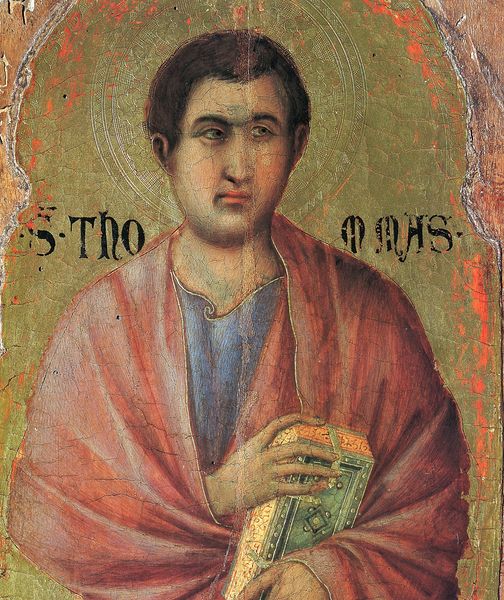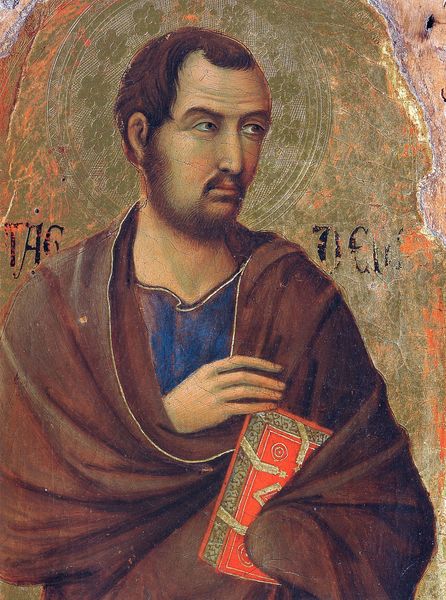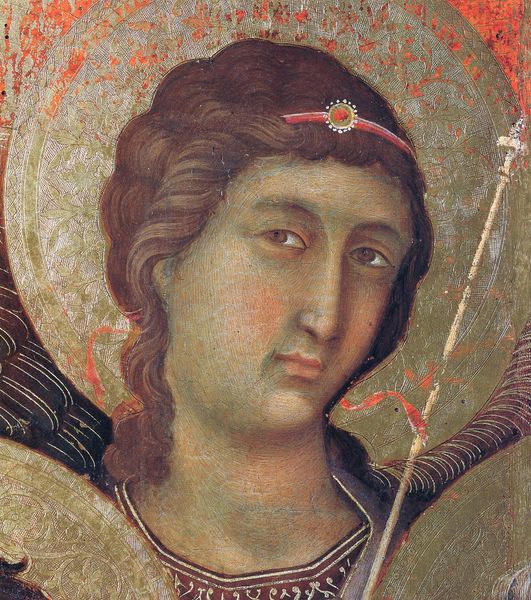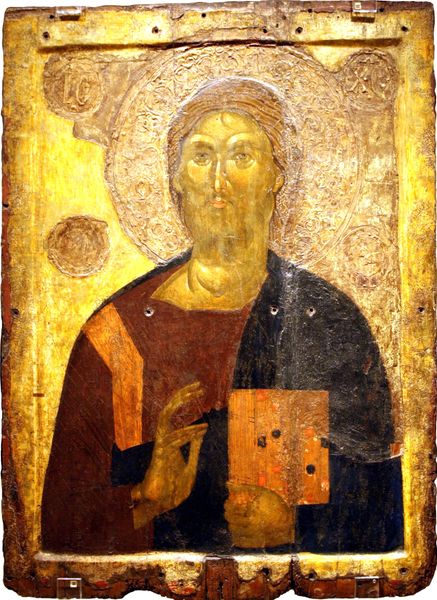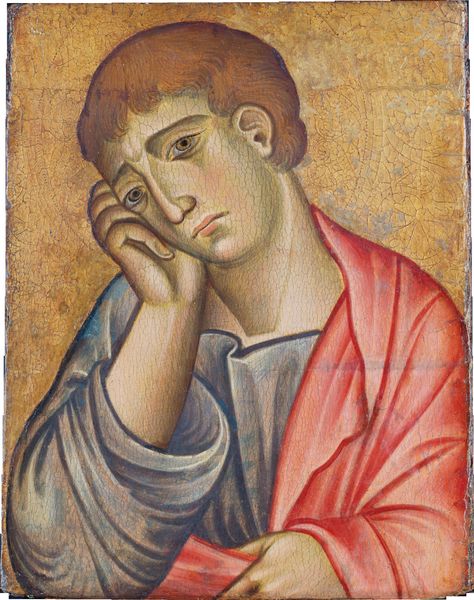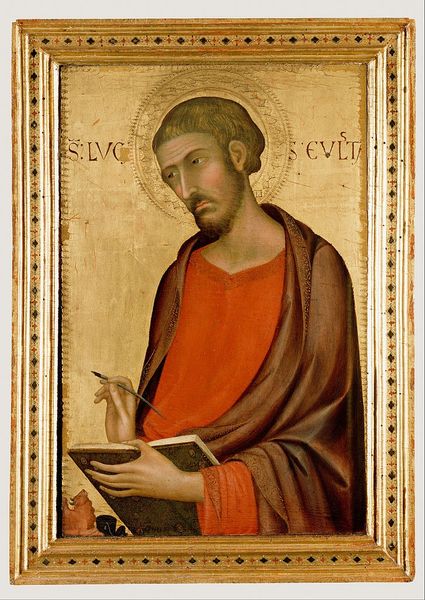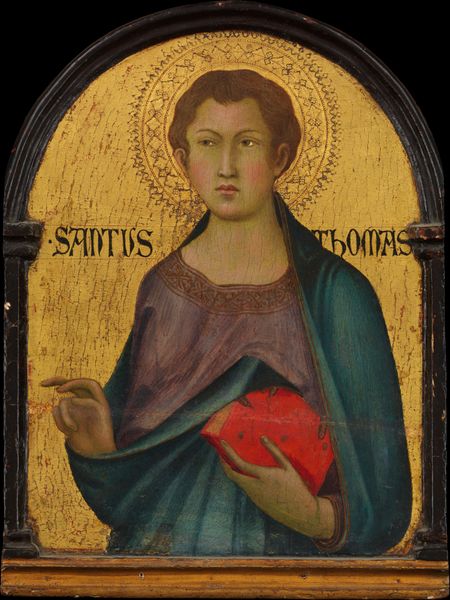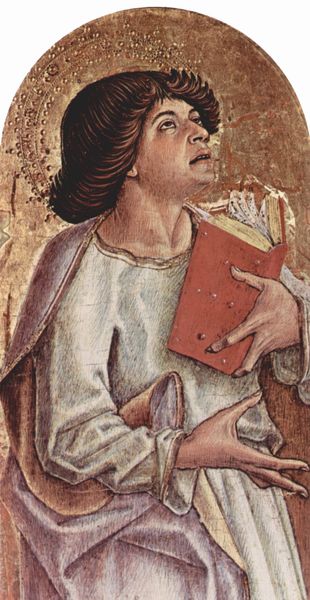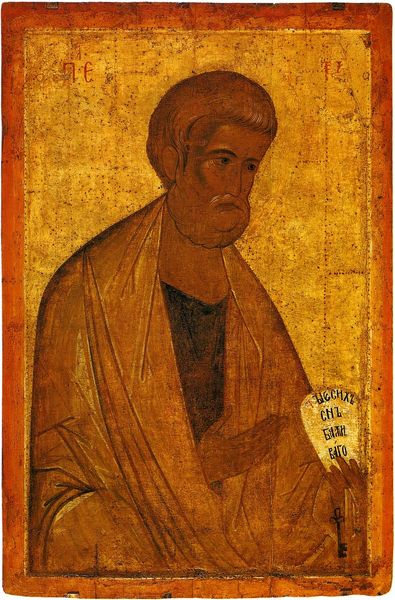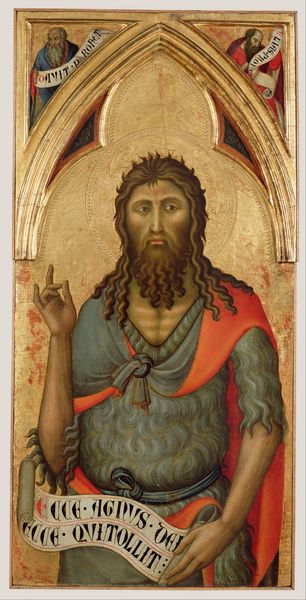
tempera, painting
#
portrait
#
medieval
#
tempera
#
painting
#
sienese-school
#
figuration
#
oil painting
#
christianity
#
history-painting
#
italian-renaissance
#
portrait art
Copyright: Public domain
Curator: Looking at Duccio's "Apostle Philip," dating back to 1311, I’m immediately struck by its contemplative nature. The colors feel muted yet refined. Editor: There's an earthy quality that pulls you in, despite the formality. The use of tempera really brings out the texture of the wood panel itself. It’s not just paint; it’s a crafted object. Curator: Indeed. The painting functioned as part of a larger altarpiece, and each apostle was designed to embody distinct theological virtues, shaping devotional experience for its audience. Philip here presents an air of reserved wisdom, typical for depictions of religious figures at the time. Editor: And it's worth noticing how the gold leafing draws attention to the divine status of the Apostle but its intentional placement within the painted composition of the work suggests a real connection between materiality and religious belief. Curator: Consider, too, that these images, distributed through the church, were crucial instruments for instructing a largely illiterate public. The subtle facial expressions and gestures communicate meaning and underscore their didactic role. Editor: Absolutely. We should think about the skilled labor involved; grinding pigments, preparing the panel. It reminds us these aren’t just artistic creations but are fundamentally tied to medieval workshop culture and its economic framework. Curator: True. The distribution networks, the commissions, the cultural values – all of these aspects affected the visual expression on the altarpiece, highlighting the artist’s position as an influential social figure. Editor: I’m particularly interested in the physical support. You can see the cracks and the wear; each imperfection becomes part of the story of this panel and how it has been handled over time, making tangible its place in society. Curator: So, Duccio's "Apostle Philip" is far more than a religious portrait; it acts as a remarkable indicator of social values and intellectual concerns during the early 14th century. Editor: Right, viewing it now we get the chance to connect it with art history but at the same time consider this object's history and what its aging tells us about its social function, beyond just faith and iconography.
Comments
No comments
Be the first to comment and join the conversation on the ultimate creative platform.
